
Looking across the Calder valley from Eastwood to Stoodley Pike
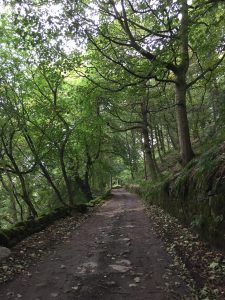
The road less travelled by – Eastwood Road
A couple of nights ago I found that Edward Binney Gibson had married Gertrude Ann Eastwood in 1910. At the time of their marriage Gertrude was a pupil teacher and he was a dentist. This got me thinking about Eastwood, a small area on the map exactly halfway between Hebden Bridge and Todmorden. Online I found a reference to Eastwood Old Hall, settled by the Eastwoods in the 1600’s. It’s perched high on the hill above the River Calder, right across the valley from Stoodley Pike. It didn’t look too far to walk – first a gently walk along the canal where the fall colours are rapidly becoming apparent – and then a steep climb up the hillside. Once off the canal and across the main road I became a little lost as Eastwood Road rapidly downgraded from a tarred road, to a cobbled path, to a dirt track. Just as I was contemplating returning to the canal, however, the postman drove up in his red van. And, lo and behold, he stopped right in front of me. Knowing that no-one would know the houses better than the mail man I asked the way and he willingly gave me directions. Yes, I was on the right trail. Just keep going through the switch backs and you’ll come to Eastwood Old Hall. “Is it all this steep?” I asked. “No! this is the steepest bit,” he assured me.
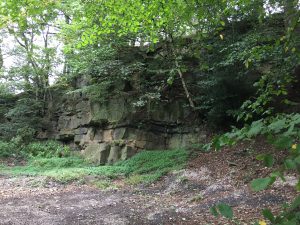
Stones from this quarry built Eastwood
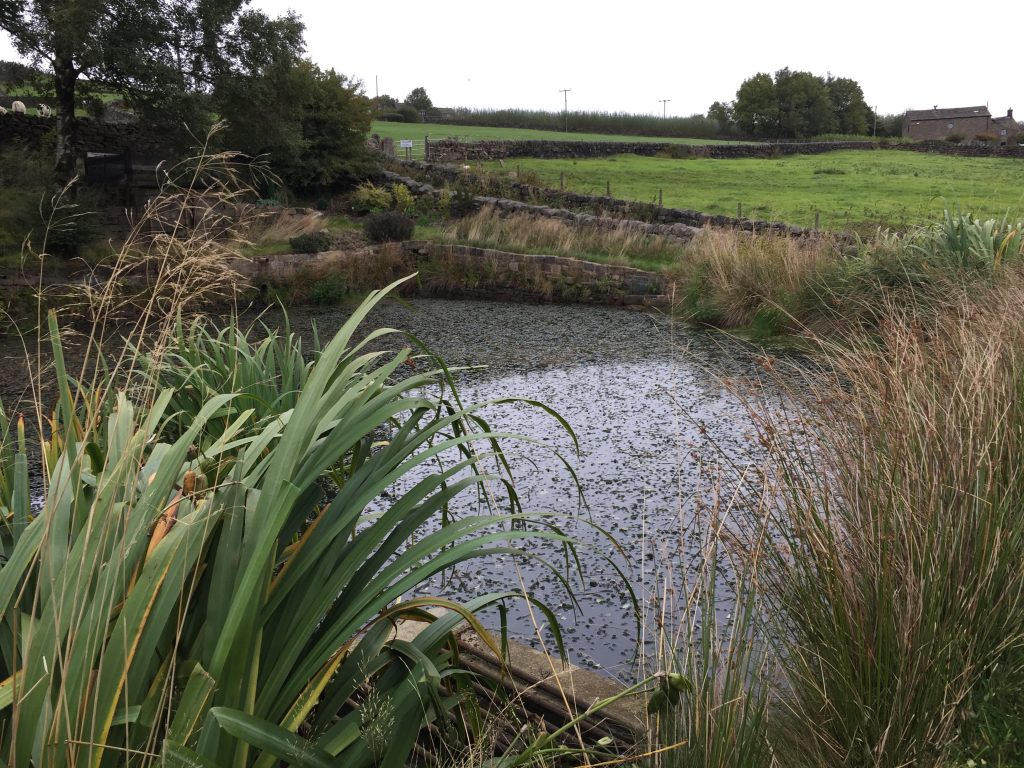
Mill pond
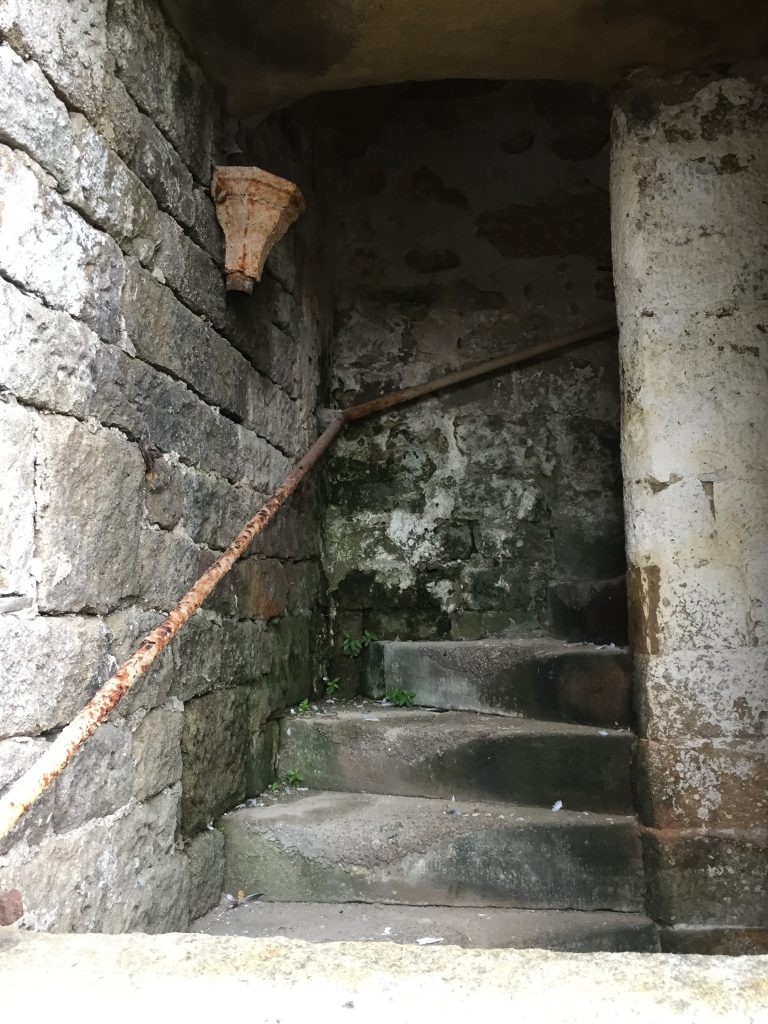
A peek into the mill
I found myself in dense woods and I passed an old outcrop of rock – millstone grit – that had obviously been used as a quarry, presumably to build the hall, I thought. Coming out of the woods I found myself facing a tiny hamlet of about 8 houses, an nineteenth century manor house on my left, a much earlier house with mullion windows on the right and behind them a row of cottages, again very old. A couple of barns had been converted into spacious homes. Every building had amazing views across to Stoodley Pike. I peeked through the gateposts into the garden of the new hall. 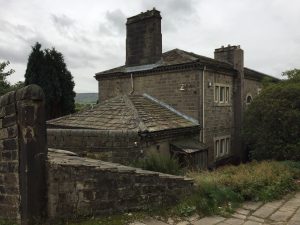
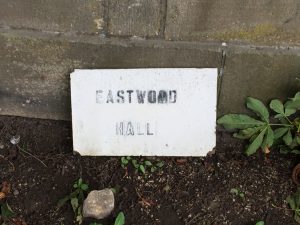 Construction of some kind was underway and a lady was talking on her phone so I continued and soon found a man tending his garden. I introduced myself, explained my reason for wandering around the hamlet and found that he was more than happy to give me a guided tour! He told me of the way in which Staupes dam had been constructed above Eastwood, the water being piped down to the mill’s holding pond, which is now a lovely feature of his garden. The water from the mill pond fed the machinery in the weaving sheds and he opened the abandoned mill. We climbed the steep spiral staircase where the steps are so heavily worn away by the clogs of the mill workers that the divets have had to be
Construction of some kind was underway and a lady was talking on her phone so I continued and soon found a man tending his garden. I introduced myself, explained my reason for wandering around the hamlet and found that he was more than happy to give me a guided tour! He told me of the way in which Staupes dam had been constructed above Eastwood, the water being piped down to the mill’s holding pond, which is now a lovely feature of his garden. The water from the mill pond fed the machinery in the weaving sheds and he opened the abandoned mill. We climbed the steep spiral staircase where the steps are so heavily worn away by the clogs of the mill workers that the divets have had to be 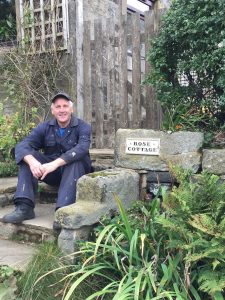
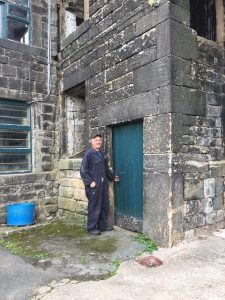 filled with concrete. The place was a photographer’s dream! Well, a photographer who’s chief pleasure is ruined buildings. This one was comparable with some of the stamp mines in the ghost towns of California and Nevada. We exchanged contact info so that I could return. On my way back down the hill I spent almost an hour talking to the lady who lives in the mill owner’s house. Her knowledge, not only of Eastwood, but the surrounding area and its ancient pack horse footpath, was impressive. We stood in her garden, taking shelter from the rain which was now coming down heavily under the vast horse chestnut trees which were losing their conkers by the minute. She told me how the stream, when it left the weaving mill, was taken by culvert further down the hillside and provided power for the dying mill. What ingenuity.
filled with concrete. The place was a photographer’s dream! Well, a photographer who’s chief pleasure is ruined buildings. This one was comparable with some of the stamp mines in the ghost towns of California and Nevada. We exchanged contact info so that I could return. On my way back down the hill I spent almost an hour talking to the lady who lives in the mill owner’s house. Her knowledge, not only of Eastwood, but the surrounding area and its ancient pack horse footpath, was impressive. We stood in her garden, taking shelter from the rain which was now coming down heavily under the vast horse chestnut trees which were losing their conkers by the minute. She told me how the stream, when it left the weaving mill, was taken by culvert further down the hillside and provided power for the dying mill. What ingenuity.
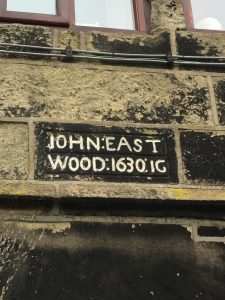
Date stone on the row of cottages

Workers’ cottages dating from 1630. The addition on the left is newer.
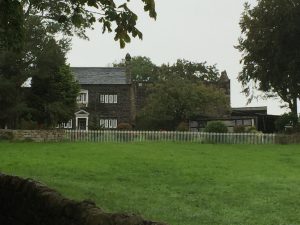
The old hall

The mill
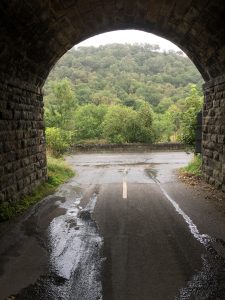
Returning to civilzation!
Heading back down the hill in the driving rain, apparently Storm Bronagh, I realised that walking into Todmorden was not practical so I caught the bus back into Hebden Bridge, where, for the rest of the day, intermittent minutes of sunshine swapped places with minutes of torrential rain.
Leave a Reply